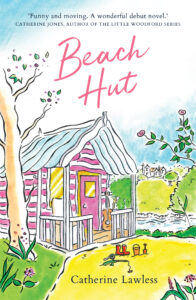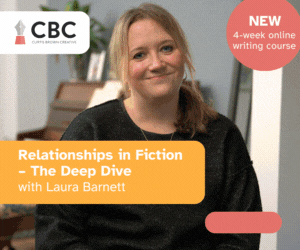Charlotte Betts: The Fading Of The Light
5 July 2021
Toda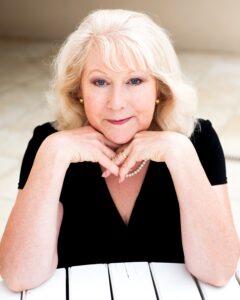 y, please welcome Charlotte Betts. Charlotte how did you decide on the names for your characters and the setting for your book?
y, please welcome Charlotte Betts. Charlotte how did you decide on the names for your characters and the setting for your book?
I always choose names for my characters as soon as possible because once a character has a name, they come alive for me. I study lists of the most popular names for my character’s birth year. Wandering through a graveyard and reading the headstones is productive and passenger lists for ships are useful, too. I choose names that are appropriate for the period and class of each character but the final decision is always because I really like the names. I’ll be living with them for at least a year!
I wanted to set a book in Cornwall because I have such happy memories of my childhood seaside holidays. The wonderful quality of the light has always attracted artists, most famously to Newlyn and St Ives. I had art school training, followed by a career in design and have always been fascinated by the idea of living in an artists’ colony. Creative people, whether an author or an artist, gain inspiration when working amongst like-minded others.
The Spindrift trilogy is about an artists’ community living in a beautiful stone house, overlooking the sea near Port Isaac. Research for the book gave me the perfect excuse to visit Cornwall three times!
What is your writing day like?
I start the day reading in bed with a cup of tea. I read for pleasure but there’s always an analytical part of my brain dissecting what I read. Does the story move me? Is the author’s writing better than mine and, if so, why? After breakfast, I walk Hattie, our collie. My husband and I live in the midst of woods so we go straight out of the door and rarely see another person. The birdsong and damp woody smells are uplifting and I cogitate on my current WIP as I walk and return calm and ready to work.
I’m usually at my desk by 9am but often, especially in the summer, I’ll come downstairs at dawn and write furiously for a couple of hours to capture the plot revelations that appear in that wonderful early morning dream state. I usually check for urgent emails/social media but leave the rest until later.
I’ll break for coffee and catch the news while I have lunch. I try to remember to stretch every hour to avoid Writers’ Neck. Fuelled by frequent cups of tea, I’ll work through until five thirty. Then, to avoid writers’ block, I make a list of what will go in the scene I’ll write the following morning and then deal with emails. I turn off the laptop for the evening soon after 6pm, unless I’m racing towards a deadline and I must write until late.
Without giving anything away, what was the hardest part of the book to write?
The Fading of the Light is the second book in the Spindrift Trilogy but it can be read as a standalone. The hardest part to write was undoubtedly the beginning. Although it was necessary for a reader to understand some of the main points and characters from the first story, I didn’t want it to be a huge information dump.
Initially, I wrote a brief synopsis of what had happened in the first book, together with a cast list of characters. It was unutterably dull. Back to the drawing board, then. I realised that in my other books I’d started at a certain point in the main character’s life but I hadn’t forced the reader to wade through endless conversations between characters explaining all that had gone before. ‘As you know, Bob, Edith had a bad relationship with her mother …’ etc, etc
Someone who has read Book 1 already knows the history and a new reader needs only the bare bones of what had happened before when it’s actually relevant to the new story. So I drip-fed in the relevant information and must have got it right because a reviewer said, ‘The prompts and reminders of the characters and plot from the previous story were delicately delivered, making it a seamless sequel as well as a good standalone story.’
Who were your favourite childhood authors?
I adored the Chronicles of Narnia by CS Lewis and books by Edith Nesbit, especially Five Children and It, The Phoenix and the Carpet, The Amulet and The Railway Children. I was a bookworm and borrowed my mother’s card for the adult library once I’d run out of books in the junior section. I read everything by Mary Stewart and Victoria Holt and loved classic Agatha Christie Novels.
If you could give your younger writing self any advice, what would it be?
I didn’t start writing until I was in my fifties and my first book wasn’t published until eleven years later. Since then I’ve written a book each year for Piatkus. When I started to write, it never occurred to me that I might ever be published. So my advice to my younger self would be to decide on my goal sooner and to join the Romantic Novelists’ Association.
The RNA members collectively have a bottomless well of experience, an excellent New Writers’ Scheme, conferences where members can network, gossip and learn all they need to know about writing. If I’d become a member sooner, I would have discovered that you can actually talk to real agents at the conferences and I probably wouldn’t have wasted years languishing in a slush pile!
Can you tell us what you are working on now?
I’ve recently delivered Letting in the Light, #3 in the Spindrift trilogy, to my publisher. Of course there will be revisions, proofs, an historical note and acknowledgements to do before it’s published in January 2022.
I’ve loved researching for the Spindrift trilogy. Each book covers five years with an approximately five-year gap between each. This means I’ve had to research three different historical periods: Victorian, Edwardian and WWI. Letting in the Light takes place during WWI. I’ve found this era fascinating, not least because of the family stories about members of my grandparents’ generation who served in the war. I have a bundle of precious letters that my grandfather wrote from the Western Front in 1918 to my grandmother, then a new bride. Details like this make that time period feel very real.
Thank you very much for inviting me to be a guest on the RNA Blog. I’ve really enjoyed talking to you and answering your questions.
Author: Charlotte Betts
Charlotte Betts is a multi-award winning author of ten romantic historical novels. She lives on the Hampshire/Berkshire borders in a 17th century cottage in the woods. A daydreamer and a bookworm, she enjoyed careers in fashion, interior design and property before discovering her passion for writing.
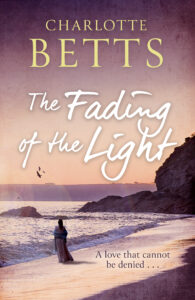
https://www.yourswithlove.co.uk/titles/charlotte-betts/the-fading-of-the-light/9780349423012/
Twitter: @CharlotteBetts1
Facebook: Charlotte Betts – Author
Instagram: charlottebetts.author
About the interviewer.
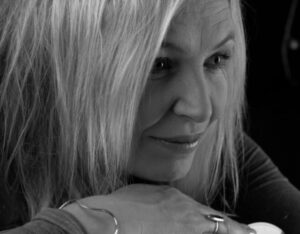
Catherine Lawless lives in Hertfordshire with her husband, daughter and their three border terriers. She writes novels, journals and children’s books. Catherine’s career started out as a singer/songwriter in a rock band. She toured extensively throughout Europe and the UK before settling down and following her childhood dream of writing books.
